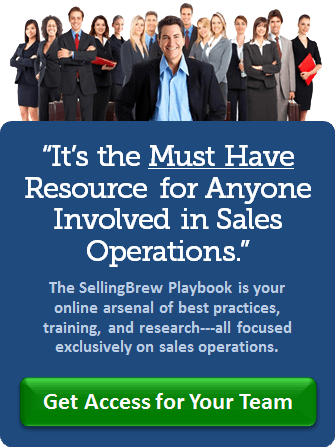In our most recent subscriber-only webinar, “Measuring the Financial Impact of Sales Ops,” we discussed how there are three major categories of metrics for quantifying and communicating your contributions:
- Output Metrics — Measuring the benefits that are ultimately produced in terms of revenue, profit contribution, lifetime value, and so on.
- Process Metrics — Measuring the time and resource efficiency of the underlying sales processes and procedures being utilized.
- Activity Metrics — Measuring the absolute number or volume of certain activities that are being performed or delivered.
We also posited that while all three types of metrics certainly have their place, they do not all have the same level of persuasive power—output metrics are the most powerful, while process and activity metrics are the least powerful, relatively speaking.
During the Q&A session of the webinar, a subscriber sought further clarification on this point, asking the following question:
“What about something like CRM utilization? Isn’t that an important metric?”
It’s not that these types of metrics aren’t important. It’s just that we need to recognize that activity and process metrics like CRM utilization tend to elicit a lot of “Yeah, but…” or “So what?” objections from management.
Now, these objections may not be spoken out loud, but when others hear something like, “CRM utilization is up 28%,” some might say to themselves, “Yeah, but that’s because everyone is being scolded a lot more about not updating their opportunities,” or “So what does that have to do with generating revenue?”
That’s why activity metrics…although important…are relatively weak metrics for demonstrating the effectiveness of Sales Ops. They can, however, be great for supporting or explaining the other, more powerful measures.
Imagine, for example, being able to present this type of case:
“Revenues are up 13% so far this period (output). This seems to correlate with the fact that we’ve reduced cycle times by 11% (process) and improved CRM utilization by 28% (activity).”
Much more powerful and credible, don’t you think?
I know, I know…everything sounds great in imaginary land. But the point is that when you focus primarily on output metrics—using the other types of metrics for additional support and credibility—you’re proactively addressing the hidden objections that can lead to skepticism and doubt.
PS: In the webinar, we spent over an hour exploring a wide variety of output measures being used by other teams, and detailing a number of highly-effective methods of quantifying Sales Ops’ impacts and contributions. So, if you’re struggling to make the transition from relying solely on process and activity metrics, I suggest you watch the on-demand videos…a couple of times 🙂












